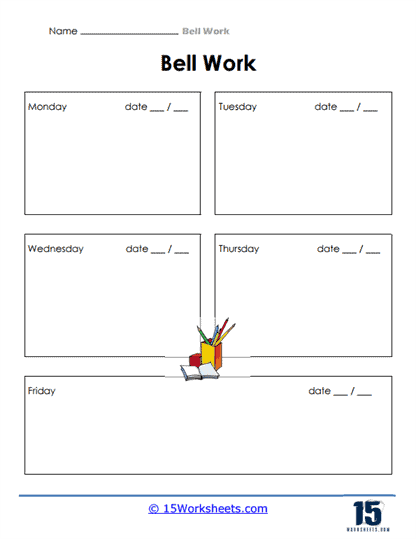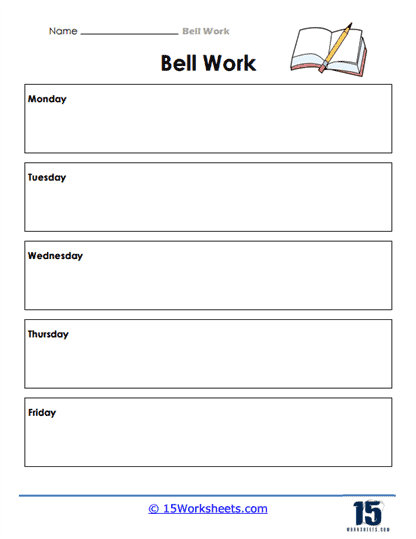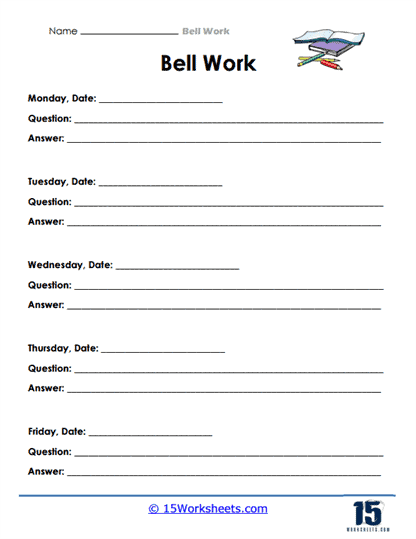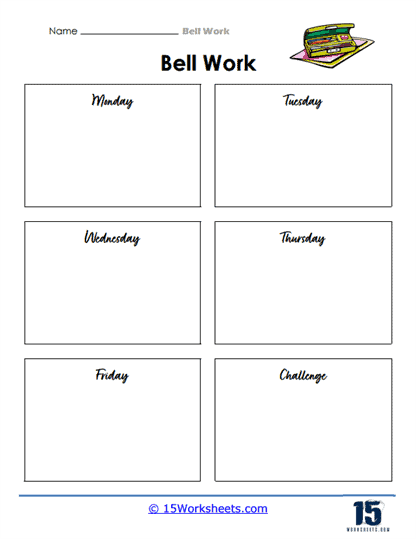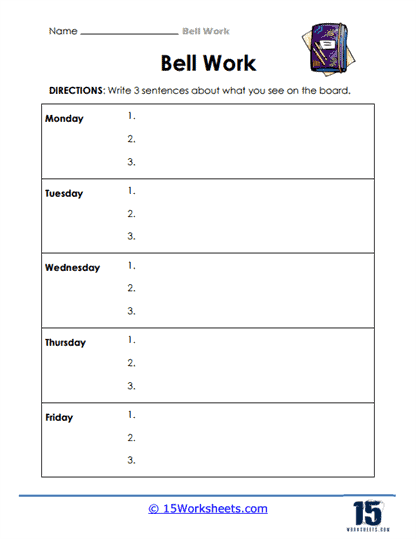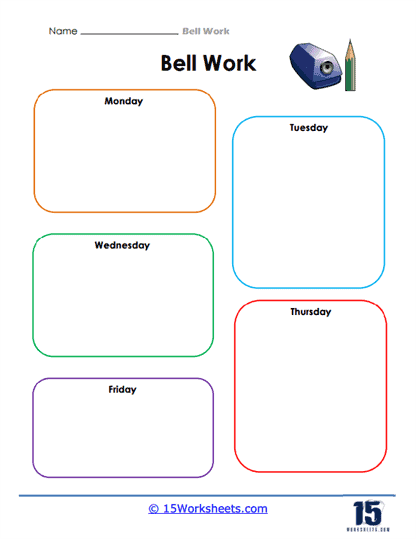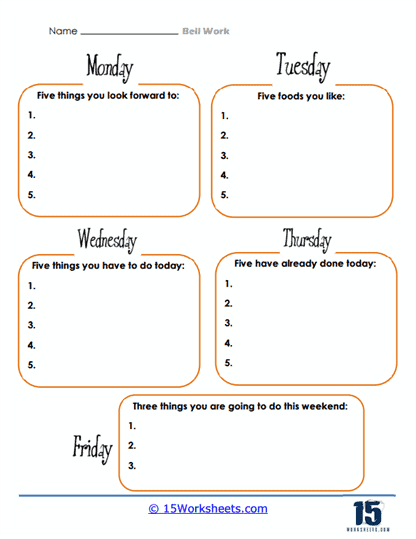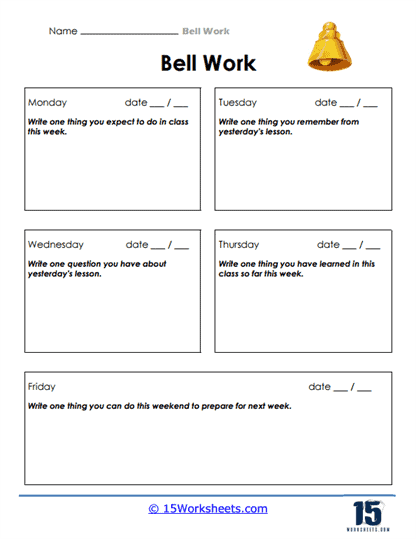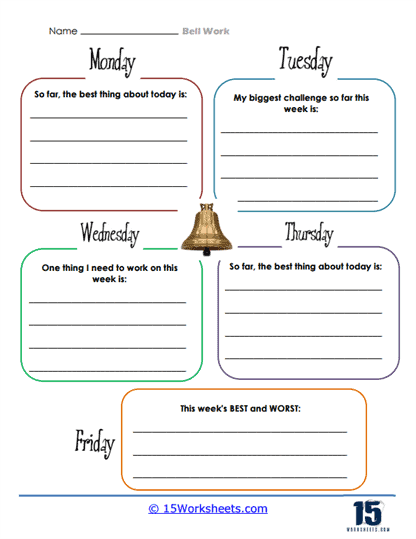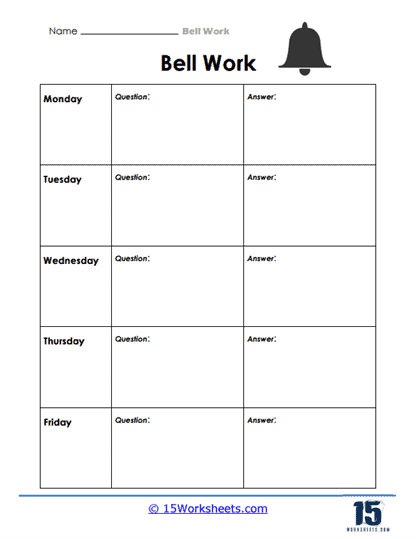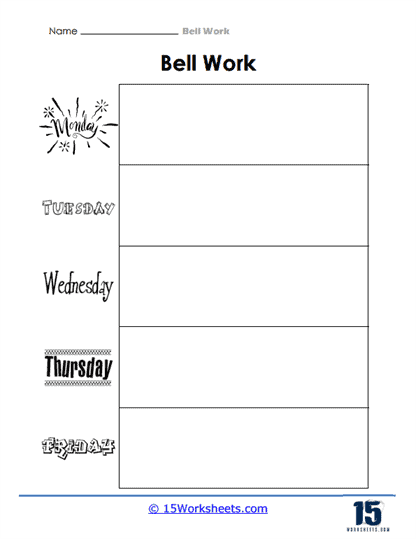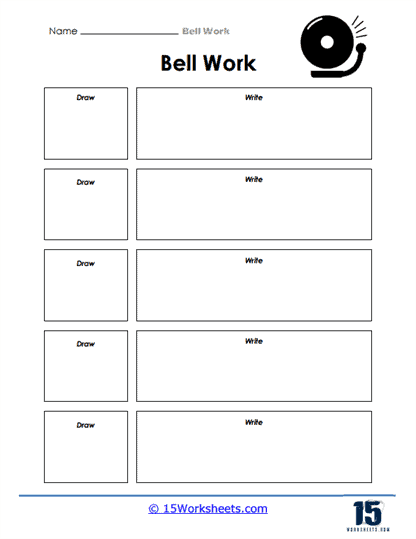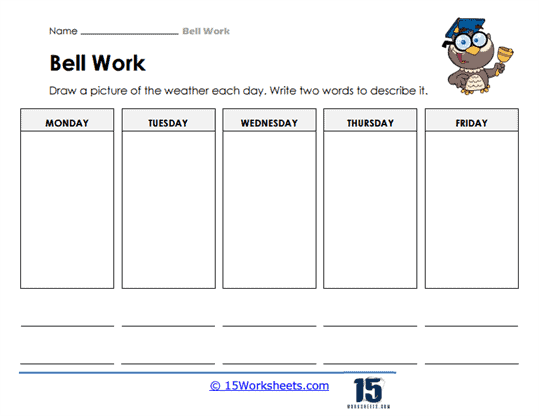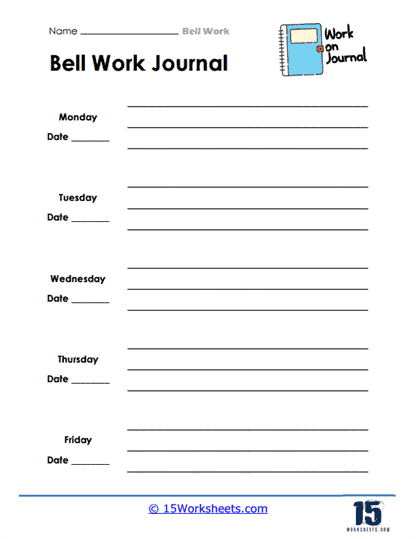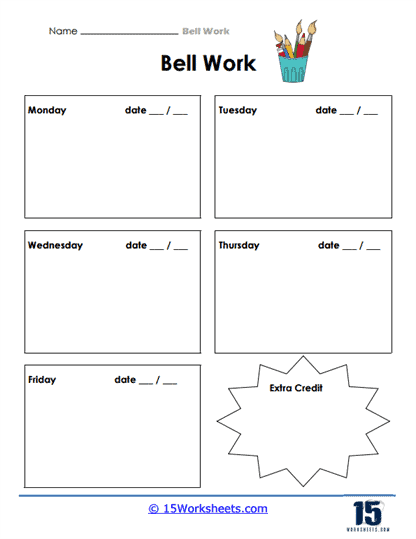Bell Work Worksheets
All About These 15 Worksheets
Bell Work is an essential component of an engaging and productive classroom routine. This series of 15 worksheets has been thoughtfully designed to provide students with stimulating activities at the beginning of each class. Serving as a warm-up exercise, these Bell Work worksheets encourage students to focus, activate their prior knowledge, and prepare their minds for the day’s learning. Each worksheet in this series offers a unique opportunity for students to start their day with active learning and mental stimulation.
The worksheets encompass a variety of topics and exercises, promoting critical thinking, creativity, and reflection. From short writing prompts to self-reflection activities, each Bell Work worksheet aims to engage students’ minds from the moment they enter the classroom. By incorporating these worksheets into the daily routine, teachers create an environment that fosters curiosity, participation, and a positive mindset. Through these worksheets, students will:
- Jot down their thoughts on self-reflection, answers on simple questions, or their observations every single day throughout the week;
- Develop their ability to articulate their thoughts and ideas effectively;
- And improve creativity, fluency, and confidence in written expression.
By incorporating these Bell Work worksheets into the classroom routine, teachers create an energizing and intellectually stimulating environment right from the start. These activities help students activate their minds, build foundational skills, foster curiosity, and establish a positive tone for the rest of the class. With a diverse range of engaging exercises, Bell Work worksheets encourage active learning and set the stage for a productive and engaging day of learning.
What is Bell Work?
Bell work, also known as bell ringers, warm-up activities, or starters, is a short educational activity or assignment given to students at the beginning of a class, right after the bell rings. The primary purpose of bell work is to engage students immediately, make use of the first few minutes of class effectively, and help students transition into the learning mode. Bell work activities usually take between 5 to 10 minutes and are related to the subject matter being taught.
Some benefits of bell work include:
- Establishing routine – Bell work helps establish a daily routine, signaling the beginning of class and setting the tone for the day.
- Maximizing instructional time – By engaging students right away, bell work reduces downtime and ensures that valuable class time is used effectively.
- Reviewing or previewing content – Bell work can be used to review previously taught material, reinforce skills or concepts, or introduce new topics in a low-pressure environment.
- Developing independent work habits – Since bell work is typically completed individually, students develop their ability to work independently and manage their time effectively.
- Assessing understanding – Teachers can use bell work as a formative assessment tool to gauge students’ understanding of a topic or identify areas where additional instruction is needed.
Examples of bell work activities include:
- Journal prompts – Students can respond to a prompt related to the day’s lesson or a topic from a previous class.
- Problem-solving – Teachers can present a math problem or brainteaser for students to solve.
- Vocabulary practice – Students can review vocabulary words, practice definitions, or use new vocabulary in sentences.
- Quick quizzes or review questions – Teachers can give students a short quiz or review questions to assess their understanding of previously taught material.
- Reading passages – Students can read a short passage and answer comprehension questions or make predictions about what they will learn in the upcoming lesson.
Bell work can be a valuable tool for teachers to create an effective learning environment and make the most of class time. By incorporating engaging, relevant, and varied activities, teachers can help students transition into learning mode and set the stage for a productive class session.

